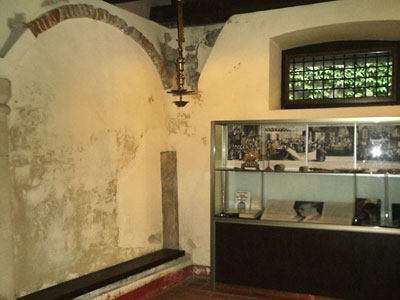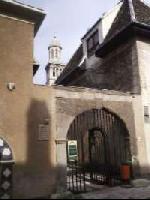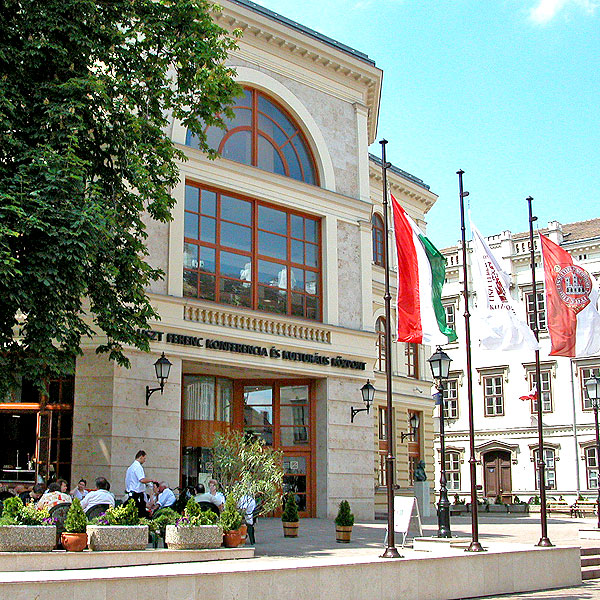 |
Medieval Synagogue
Sopron, Új u. 22.
 |
We do not know the exact date of the Jews’ settlement in Sopron, but it is sure that about 10-16 families lived in New Street (Új utca) as early as the 13th century. Although the Jews of the town dealt primarily with commerce and finance, they were not really rich. Still, their Gothic synagogue built at the beginning of the 14th century, is a unique piece of architecture in Eastern Europe.
 |
The Jewish religion says there is only one church where God is truly present, the Church of Jerusalem. Therefore, the synagogue is a house of prayers, a place for congregations, and a school. Near the synagogue there used to be a hospital providing accommodation for wanderers, and a ritual bath, which is open to visitors today. A corridor from the entrance leads to the main hall. Its main door is decorated with a tympanum, and two side consoles date from 1300, the time of construction. The two focal points of the synagogue are the Aaron alcove and the pulpit. The Aaron alcove is decorated with a richly-ornamented stone frame and a tympanum, with motifs of grapes and leaves fashioned in the colours of nature. Only the foundation of the hexagonal pulpit is original, but its layout, stairs, high railings, and reading-stand oriented to the East follow the original design. Women had their own house of prayers, which was equipped with its own exit. They could follow the events in the main hall only through narrow window slots. Another exciting part of the museum is the ritual bath. The Jewish religion has always differentiated between clean and dirty things, so baths have always played an outstanding role in the spiritual life of the Jews. The laws of Moses ordained submergence in clear running water, but here there was only the natural water of the fountain. After the expulsion of the Jews from Sopron in 1526, the synagogue started to fall into decay; later it was converted into private homes. The building regained its original beauty during the restoration work of 1967.
